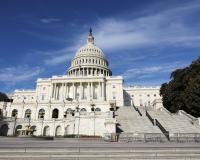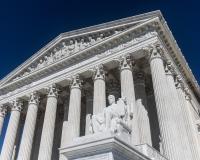
Vibrant Environment
Governance And Rule Of Law
All | Biodiversity | Climate Change and Sustainability | Environmental Justice | Governance and Rule of Law | Land Use and Natural Resources | Oceans and Coasts | Pollution Control

It’s a fact recognized by every well-behaved child: the attention always goes to the misbehaving sibling or classmate. Similarly, companies with strong environmental audit/assessment programs rarely receive much acclaim, despite publicizing their efforts in great detail. And why should they? These gold-star companies have minimal interaction with the enforcement arms of federal and state agencies.

When I last sat down to write this column, the Supreme Court had just issued its 6-3 decision in West Virginia v. EPA. As I said at the time, it was disheartening, and many in the environmental law field were assessing how to bounce back from its potential effects limiting agency action. Fast-forward two months, and while the concerns raised by that case aren’t gone, we’ve spun in the other direction.

Clean energy technologies require a variety of minerals of varying degrees of scarcity. As a result, decarbonizing the economy will entail expansion of mineral production—not only through imaginative reuse and recycling, but also through new mines and the permits required to build those mines. Some have called for a loosening of environmental standards to address this growing need.


Passed on August 16, 2022, the Inflation Reduction Act commits nearly $370 billion in direct investment to address climate change and energy production.

Developments this past summer—including the U.S. Supreme Court’s decision in West Virginia v. EPA and the historic passage of the Inflation Reduction Act (IRA)—have dramatically reshaped the future of U.S. climate law.

Recent judicial and administrative changes to the scope of the Clean Water Act of 1972 (CWA) have major implications for state regulators. In this month’s issue of ELR—The Environmental Law Reporter, ELI Senior Attorney James McElfish examines the existing legal framework for state protection of nonfederal waters and discusses potential impacts of upcoming federal decisions, including the U.S. Supreme Court’s consideration of Sackett v. Environmental Protection Agency in October.

When the pandemic started, it seemed you couldn’t turn a page or open an email without seeing “unprecedented” used in one context or another. And it was true—we were in uncharted territory, and among everything else, it was hard not to keep returning to that locution. I clearly remember sending a mass email using the word, thinking I was the first person to stumble upon this apt descriptor; little did I know how ubiquitous it would become.

I didn’t know when I became editor of the Forum that the era of landmark environmental lawmaking was almost over—with some exceptions that I will duly note. The year was 1990, and the buzz was all about new amendments to the Clean Air Act that would address the scourge of acid rain through the first large-scale test of emissions trading. It was the kind of legislation that is so desperately needed today to address the climate crisis by moving the United States to a renewable energy economy—a monumental task requiring a comprehensive, nation-wide approach.

As the national conversation following the West Virginia v. Environmental Protection Agency (EPA) verdict showed, climate change continues to be a focal point of this generation. And that conversation is happening both inside and outside the courtroom in the form of amicus briefs.